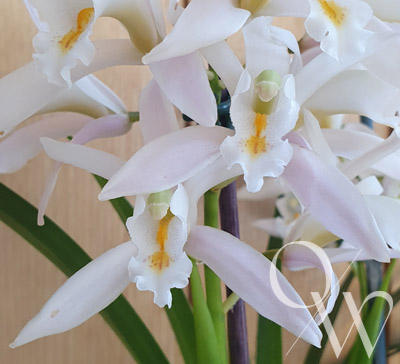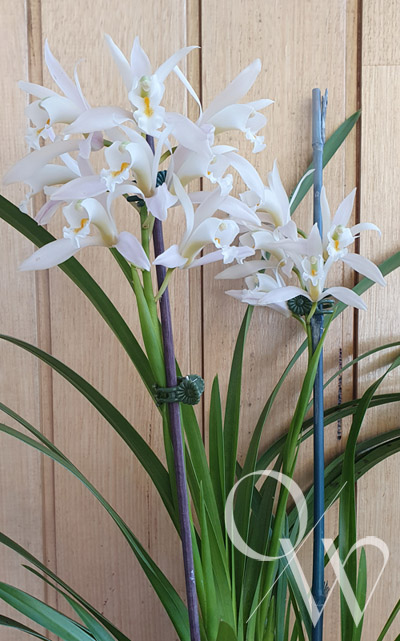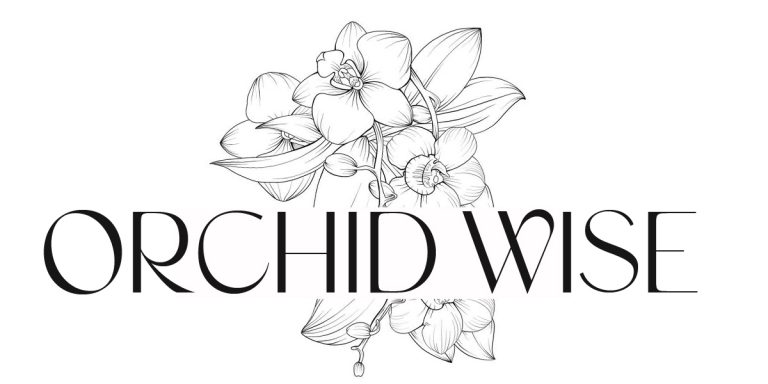This is another in a series of articles relating to historically important plants in the Cymbidium world.

Long on my list of Cymbidium species ‘unicorn plants’, Cymbidium mastersii is among the oldest Cymbidiums listed with the Royal Horticultural Society (RHS).
First listed with the RHS in 1845, this unique species orchid holds a special place in the hearts of enthusiasts for its pristine white beauty and rich heritage.
As a bit of a species Cymbidium nut, I love this plant!
Cym. mastersii was first described and named by William Griffith (1810-1845), originally a trained medical doctor in London, but later well known as a Botanist.
During his early life Griffith became a student of John Lindley, a well known Botanist and Horticulturalist, at the University of London.
Griffith travelled to India during 1832 as an assistant surgeon in the service of the East India Company. An ideal posting really to pursue a love of Botany. In India, he conducted numerous expeditions in India, Malaysia, Singapore, Borneo and Burma to conduct extensive botanical studies.
Griffith’s life was characterized by a pursuit of botanical knowledge and a commitment to the cultivation and preservation of Cymbidium orchids. Extensive research, meticulous documenting and classifying of numerous plant species, including various Cymbidium orchid varieties, were Griffith’s real strengths.
He made measurable contributions to orchid taxonomy, propagation techniques, and cultivation methods at the time. His expertise and dedication to Cymbidium orchids earned him recognition from his peers as a leading authority in orchid cultivation. Griffith died soon after contracting hepatitis in India in 1845.
Cym. mastersii was first described and named by William Griffith for John William Masters, a gardener at the Botanical Garden in Calcutta in the 1800s. However, formal listing with the RHS was actually made by John Lindley in 1845.
Cymbidium mastersii – An Awarded Species Cymbidium
Cymbidium mastersii is a compact plant, so a really great fit for smaller spaces. It has very gently arching flower spikes of 25-35cm in height, carrying 2-15 classic white, petite flowers. These flowers have a yellow line down the centre of the throat and a white pollen cap. It can produce two spikes per bulb when grown well, and has received several awards over the years.
Flowering at the end of Autumn and into Winter (May/June in Australia) it has a slight sweet scent, some say almond like, and having several in flower in the same area creates a beautiful fragrance. It really does smell wonderful!
The native distribution or range of this species is E. Himalaya to China (W. Yunnan) and N. Indo-China and at altitudes from about 900m – 2200m.
Cym. Mastersii is a relatively slow grower and takes some time to reach a specimen size, however, it is worth the wait, I promise! I grow this plant in a very free draining mix so the roots don’t stay wet. It dries out between waterings, however, I do water it often to ensure it doesn’t dry out. I also fertilise quite regularly with about a half strength liquid fertilizer.
I love this plant and having it flower en-masse is a fantastic thing to see, and smell!
My belief with encouraging all Cymbidiums to flower well is to give them lots and lots of light. Mastersii is no exception. But as the buds are coming out of the spike sheath I do move it to a more protected and shadier spot. This ensures there is no fading or discolouration of the pristine white flowers.

Cym. mastersii has about 45 immediate offspring, 17 of which are primary hybrids, and almost 1300 Cymbidium registrations have some percentage of mastersii in them.
My favourite Primary Hybrid crosses from Cym. mastersii include Cym. Frosty Jack, Cym. Mem. David Sander and Cym. Ballianum (which I am also lucky enough to own). So have a look out for them, they are also worth obtaining if you can.
Cym. mastersii is not too common in cultivation, and is tightly held in most collections. Although if you look hard enough it is out there, and obtainable. It took me some time to source one that, I think, is worthy of showing off and it is a real pleasure having it in the collection and every year I desperately hope it flowers!
